| Jesse Colin
Young: "The Soul Of A City Boy" (Capitol, Apr. 1964) |
|
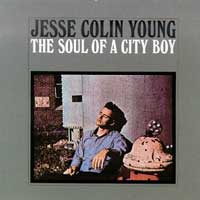 Noch so eine Wühltischentdeckung! Ende der 60er hatte er die Youngbloods
gegründet und in den 70ern gab's noch mehrere schöne Soloalben.
Aber dieses Debüt ist tatsächlich bereits von 1964!
Noch so eine Wühltischentdeckung! Ende der 60er hatte er die Youngbloods
gegründet und in den 70ern gab's noch mehrere schöne Soloalben.
Aber dieses Debüt ist tatsächlich bereits von 1964!
Wie leichtgläubig man doch oft ist! beim Hören der Platte
fällt mir auf, dass da nirgendwo John Sebastian mit seiner
Mundharmonika zu hören ist, wie aber in einer der angeführten
Besprechungen behauptet wird! Die Erklärung ist im Übrigen
recht einfach: der gute Mann hatte "Soul Of A City Boy" mit
"Young Blood", dem Nachfolger- Album von 1965 verwechselt.
Ansonsten bleibt weiterhin festzuhalten: schöner Folk-Blues, der
aus heutiger Sicht zwar ein klein wenig antiquiert klingt, aber trotzdem
in der Liga von Bob Dylan angesiedelt werden darf.
(08.03.2006)

 Mehr ...
Mehr ...
|
Twenty-two-year-old Perry Miller was spotted by pianist/composer Bobby
Scott at Folk City in Greenwich Village and signed to Capitol Records
under the auspices of Scott's employer, Bobby Darin. Scott took Miller,
now renamed Jesse Colin Young, into New York's A&R Studios in the
spring of 1964, and they emerged four hours later with this 31-minute,
11-track acoustic-guitar-and-vocal debut album. Young proved to be an
adept guitarist conversant with all the basic fingerpicking folk patterns,
and to have an expressive, elastic tenor voice with just a touch of graininess
to keep him from sounding too smooth. His six originals were fine but
unexceptional, and his covers of songs like "Rye Whiskey" were
pleasant. In the folk boom of the early '60s, The Soul of a City Boy was
just one more entry in the dominant style, and it would not be remembered
today if Young had not gone on to bigger and better things. But it demonstrates
that in his early 20s, he had a good grasp of the playing, singing, and
writing talents upon which he would build in later years. The album did
not sell upon release, but when it was reissued for the second time in
January 1974 in the wake of the success of Young's Song for Juli album,
it made the charts for several weeks.
(by William Ruhlmann, All
Music Guide)
|
|
|
"Jesse Colin Young was one of the most original singer songwriters
of the early 60s. His first record, The Soul Of A City Boy (Capitol, 1964)
is infinitely more modern and creative than Dylan's early work, not to
mention all the others. At his side were a young John Sebastian on harmonica,
and a rhythm section of jazz men. Lullaby, Little Suzie and Green Hill
Mountain Home are songs that transcend folk, blues, country and jazz.
The only problem is it would remain his unsurpassed masterpiece."
(Quelle ???)
|
|
| Bob Dylan: "The
Times They Are A-Changin'" (Columbia, Juni 1964) |
|
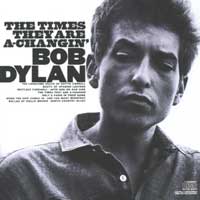 "The
Times They Are A-Changin' ist eine der düstersten Platten, die
Dylan gemacht hat. Als 22-jähriger klingt er schon genauso pessimistisch
wie der kränkelnde 55-jährige, der "Time
out of Mind" aufgenommen hat. Auf der LP finden sich auch stürmische
Protestlieder wie der Titel-Track und "When the Ship Comes In",
aber diese werden von den genauso kraftvollen, vor Pessimismus triefenden
Stücken wie "Only a Pawn in Their Game", "The Lonesome
Death of Hattie Carroll" und "The Ballad of Hollis Brown"
zahlenmäßig weit übertroffen. Es scheint, als ob Bob
Dylan erst einmal sein grimmigstes Material abliefern wollte, bevor
er mit "Another Side of Bob Dylan"
auf die Seite der Befreiung und des Lachens wechselte." (Rickey
Wright, Amazon) "The
Times They Are A-Changin' ist eine der düstersten Platten, die
Dylan gemacht hat. Als 22-jähriger klingt er schon genauso pessimistisch
wie der kränkelnde 55-jährige, der "Time
out of Mind" aufgenommen hat. Auf der LP finden sich auch stürmische
Protestlieder wie der Titel-Track und "When the Ship Comes In",
aber diese werden von den genauso kraftvollen, vor Pessimismus triefenden
Stücken wie "Only a Pawn in Their Game", "The Lonesome
Death of Hattie Carroll" und "The Ballad of Hollis Brown"
zahlenmäßig weit übertroffen. Es scheint, als ob Bob
Dylan erst einmal sein grimmigstes Material abliefern wollte, bevor
er mit "Another Side of Bob Dylan"
auf die Seite der Befreiung und des Lachens wechselte." (Rickey
Wright, Amazon)
|
| Lee Morgan: "The Sidewinder" (Blue Note,
Juli 1964) |
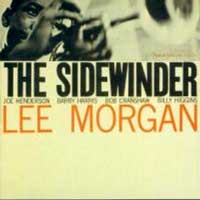 So weit ich weiß ist dies einer der größten Hits des Blue Note Labels
aus den 60ern! Aufgenommen am 21. Dez. 1963.
So weit ich weiß ist dies einer der größten Hits des Blue Note Labels
aus den 60ern! Aufgenommen am 21. Dez. 1963.

 Mehr ...
Mehr ...
Der in Philadelphia geborene Trompeter und hervorragende Bebop-Stilist Lee Morgan sammelte seine ersten Erfahrungen bei Dizzy Gillespie und Art Blakey, bevor er sich in den frühen 60ern als Leader mit eigenen Aufnahmen bei Blue Note hervortat. Obwohl musikalisch Gillespie und Clifford Brown verpflichtet, entwickelte er doch bald seine persönliche Stimme, die Halb-Ventil-Effekte ebenso beinhaltete wie Latin-Einflüsse und volltönende fließende Melodien.
Während viele von Morgans späteren Blue Note Sessions zusammen mit dem Saxophonisten Hank Mobley entstanden, stellt The Sidewinder den noch jungen Tenoristen Joe Henderson an der Seite des Detroiter Pianisten Barry Harris, des Bassisten Bob Cranshaw und des Schlagzeugers Billy Higgins in den Vordergrund. Neben dem Titelstück, einem konventionellen 24-taktigen Blues, ist "Totem Pole" der kompositorische Mittelpunkt, ein Latin-Moll-Groove mit einen herausragenden Solo von Joe Henderson. Das ist die Art entspannter, durch geistreiche Darbietungen belebter Studiotermine, die das Rückgrat des Blue Note-Katalogs ausmachen.
(Fred Goodman, Amazon.de)
In the age of the long-haired rock groups, a jazz hit single was a rarity. In early 1965, however, Lee Morgan’s ‘The Sidewinder’, a catchy soul jazz tune riding a jaunty, danceable groove, broke into the US Hot 100, peaking at No.81. The parent album, released the previous year, when Morgan was 25, did even better, reaching No.25 on the US albums chart and becoming the biggest-selling LP in Blue Note’s history. Though dominated by its highly infectious title song, The Sidewinder is not a one-track wonder. Morgan, together with tenor saxophonist Joe Henderson, pianist Barry Harris, bassist Bob Cranshaw and drummer Billy Higgins, serves up some serious hard bop blowing. Notable for its absence of ballads, The Sidewinder offers a selection of Morgan-penned uptempo numbers, including the super-lively ‘Hocus Pocus’ and slightly mellower ‘Totem Pole’, which are characterised by strong solos and taut group interplay.
(www.udiscovermusic.com)
The Sidewinder was trumpeter Lee Morgan’s – and for a time, Blue Note’s – greatest commercial triumph. As a single, the infectious title track with its jaunty, danceable groove, made Billboard’s Hot 100, helping the parent album to ascend to No. 10 in the US R&B albums chart. The rest of the album was more exploratory, ranging from Latin-inflected pieces (“Totem Pole”) to advanced hard bop (“Gary’s Notebook” and “Hocus-Pocus”). Morgan’s collaborators included Joe Henderson and pianist Barry Harris. Even today, The Sidewinder continues to be one of the top-selling albums in Blue Note’s catalogue.
(www.udiscovermusic.com)
|
| Bob Dylan: "Another
Side Of Bob Dylan" (Columbia, Sept. 1964) |
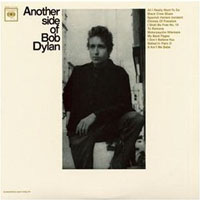 Mit
dem dritten Album gab es eine Abkehr von den mehr politischen Songs, zurück
zu privaten Themen. "Chimes Of Freedom", "My Back Pages"
"It Ain't Me, Babe". Hat damals nicht jedem in den Kram gepasst. Mit
dem dritten Album gab es eine Abkehr von den mehr politischen Songs, zurück
zu privaten Themen. "Chimes Of Freedom", "My Back Pages"
"It Ain't Me, Babe". Hat damals nicht jedem in den Kram gepasst. |
| John Coltrane Quartet:
"Crescent" (Impulse!, Okt. 1964) |
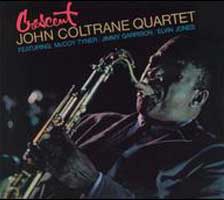 Im Sommer '64 hatte Coltrane mit McCoy Tyner, Jimmy Garrison
und Elvin Jones endlich "klassischen" Quartett zusammen,
mit dem er dann am 09.12.64 das legendäre Album "A
Love Supreme" aufnehmen würde. Erstmalig gab es auch nur
Eigenkompositionen zu hören. Aus der Distanz heraus betrachtet hat
"Crescent" wohl nicht den gleichen historischen Stellenwert,
ist aber auf jeden Fall ein tolles, von vielen Leuten wohl erst noch zu
entdeckendes Album!
Im Sommer '64 hatte Coltrane mit McCoy Tyner, Jimmy Garrison
und Elvin Jones endlich "klassischen" Quartett zusammen,
mit dem er dann am 09.12.64 das legendäre Album "A
Love Supreme" aufnehmen würde. Erstmalig gab es auch nur
Eigenkompositionen zu hören. Aus der Distanz heraus betrachtet hat
"Crescent" wohl nicht den gleichen historischen Stellenwert,
ist aber auf jeden Fall ein tolles, von vielen Leuten wohl erst noch zu
entdeckendes Album!

 Mehr ...
Mehr ...
Crescent was Coltrane’s ninth album for Impulse!, the jazz division of ABC/Paramount that he quit Atlantic for, in 1961. Featuring his so-called classic quartet (Tyner, Garrison, Jones), it contained all original compositions and proved to be a very spiritual LP epitomised by the haunting ‘Wise One’, which opens with lush, rhapsodic chords from Tyner, who sets the mellow tone for Coltrane’s tenor sax, which enunciates a beautiful melody. The second side of the album was also remarkable for containing two tunes (‘Lonnie’s Lament’ and ‘The Drum Thing’) on which Coltrane doesn’t take a solo. Stylistically, it’s a perfect starter to prepare the listener for the following year’s A Love Supreme.
(www.udiscovermusic.com)
One of only two studio albums cut by the John Coltrane Quartet during 1964, Crescent is most notable for including five Coltrane compositions including the title cut, "Lonnie's Lament" and the swinging "Bessie's Blues." The music is excellent although not as fiery as the Quartet's live performances of the period.
(by Scott Yanow, All Music Guide)
|
| Stan Getz: "Getz Au Go Go" (Verve,
Okt. 1964) |
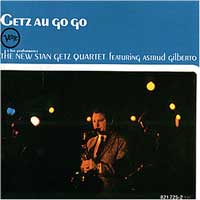 Ein
Highlight der Bossa Nova/Jazz-Fusion. Mit den Tom Jobim-Songs "One
Note Samba" und "Corcovado" und vielen anderen Jazz-Klassikern.
Als Gaststar ist die Sängerin Astrud Gilberto dabei
(Getz und Gilberto hatten es im Jahr zuvor geschafft,
als Jazzer mit dem "Girl from Ipanema" in die Charts zu kommen),
am Vibraphon ein junger Mann zu Beginn seiner Weltkarriere dabei: Gary Burton. Ein
Highlight der Bossa Nova/Jazz-Fusion. Mit den Tom Jobim-Songs "One
Note Samba" und "Corcovado" und vielen anderen Jazz-Klassikern.
Als Gaststar ist die Sängerin Astrud Gilberto dabei
(Getz und Gilberto hatten es im Jahr zuvor geschafft,
als Jazzer mit dem "Girl from Ipanema" in die Charts zu kommen),
am Vibraphon ein junger Mann zu Beginn seiner Weltkarriere dabei: Gary Burton.
|
| Sandy Bull: "Inventions"
(Vanguard, 1964 ) |
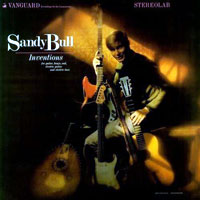 Lost & Found!
Lost & Found!
(22.06.2014)

 Mehr ...
Mehr ...
Considered to be his finest moment, Bull's second record goes beyond his first, wearing an electric halo while he continues to explore the boundaries of the guitar. "Blend 2", his answer to his first record's opus "Blend", is a must have for all of those who love John Fahey and Six Organs Of Admittance. A ghostly, warm record as a whole: Bull is on top of his game and once again reinventing the way the ear hears the hand as it plays the guitar. Original artwork.
|
| John Coltrane: "Black
Pearls" (Prestige, 1964) |
 Aufgenommen
mit dem Red Garland Trio (Garland am Piano, dazu Drummer Art
Taylor und Bassist Paul Chambers), verstärkt durch Trompeter
Donald Byrd, bereits am 23.05.1958. Nach meiner Vermutung
auf Basis der Bestellnummer (PR 7316) aber erst 1964 veröffentlicht, als
Coltrane bereits ein "Star" war. Eine der unzähligen Sessions,
die Coltrane damals für das Prestige-Label machte. Der Vorwurf an Künstler,
bzw. eher: an das Label, lautet natürlich schnell: "Abfallprodukt"
oder sogar: "Trittbrettfahrer". Natürlich ist das hier nicht
so innovativ, was Coltrane zeitgleich auf dem Impulse-Label produzierte
und veröffentlichte Aufnahmen (z.B. "Crescent"
vom Juni '64 oder das im Dezember folgende Meisterwerk "A
Love Supreme"), aber doch von allerhöchster Güte. Ich kenne inzwischen
so einige der Coltrane Prestige-Veröffentlichungen, aber diese hier scheint
mir doch besonders gelungen. Oder besser gesagt: besonders schön zu geniessen. Aufgenommen
mit dem Red Garland Trio (Garland am Piano, dazu Drummer Art
Taylor und Bassist Paul Chambers), verstärkt durch Trompeter
Donald Byrd, bereits am 23.05.1958. Nach meiner Vermutung
auf Basis der Bestellnummer (PR 7316) aber erst 1964 veröffentlicht, als
Coltrane bereits ein "Star" war. Eine der unzähligen Sessions,
die Coltrane damals für das Prestige-Label machte. Der Vorwurf an Künstler,
bzw. eher: an das Label, lautet natürlich schnell: "Abfallprodukt"
oder sogar: "Trittbrettfahrer". Natürlich ist das hier nicht
so innovativ, was Coltrane zeitgleich auf dem Impulse-Label produzierte
und veröffentlichte Aufnahmen (z.B. "Crescent"
vom Juni '64 oder das im Dezember folgende Meisterwerk "A
Love Supreme"), aber doch von allerhöchster Güte. Ich kenne inzwischen
so einige der Coltrane Prestige-Veröffentlichungen, aber diese hier scheint
mir doch besonders gelungen. Oder besser gesagt: besonders schön zu geniessen.
Und wenn man denn doch unbedingt noch etwas zum Meckern sucht: das Coverfoto
ist natürlich spiegelverkehrt! Ein immer wieder bei Billig-Trittbrettfahrern
zu findender Fehler. Da darf wohl immer irgendein unbedarfter Praktikant
oder uninteressierter Mitarbeiter das Foto auswählen und das Cover gestalten
...
(10.05.2009) |
| Grant Green: "Idle Moments"
(Blue Note, 1964) |
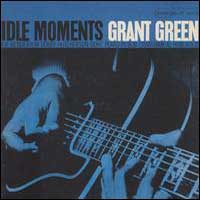 "Idle Moments", so was wie "Momente des Müßiggangs",
deutet natürlich auf eine sehr lässige Spielart des Jazz hin,
die hier der Gitarrist Grant Green mit seinen exzellenten Mitspielern
(u. a. Joe Henderson am Tenorsax und Bobby Hutcherson am
Vibraphon) pflegt. Vor allem aber swingt die Platte ungemein. Mit böser
Zunge könnte man das als "Barjazz" bezeichnen, aber warum
ist da ein Schimpfwort? Diese Band spielt hier gleichzeitig völlig
lässig und total virtuos - und ich hätte sie dabei extrem gerne
in einem Jazzclub erlebt! Ansonsten: vielleicht DIE PERFEKTE BLUE NOTE
PLATTE?
"Idle Moments", so was wie "Momente des Müßiggangs",
deutet natürlich auf eine sehr lässige Spielart des Jazz hin,
die hier der Gitarrist Grant Green mit seinen exzellenten Mitspielern
(u. a. Joe Henderson am Tenorsax und Bobby Hutcherson am
Vibraphon) pflegt. Vor allem aber swingt die Platte ungemein. Mit böser
Zunge könnte man das als "Barjazz" bezeichnen, aber warum
ist da ein Schimpfwort? Diese Band spielt hier gleichzeitig völlig
lässig und total virtuos - und ich hätte sie dabei extrem gerne
in einem Jazzclub erlebt! Ansonsten: vielleicht DIE PERFEKTE BLUE NOTE
PLATTE?
(Feb. 2006)

 Mehr ...
Mehr ...
This languid, seductive gem may well be Grant Green's greatest moment on record. Right from the opening bars of the classic title cut, Idle Moments is immediately ingratiating and accessible, featuring some of Green's most stylish straight jazz playing. Whether he's running warm (pianist Duke Pearson's "Idle Moments"), cool (the Modern Jazz Quartet's "Django"), or a bit more up-tempo (Pearson's "Nomad," his own "Jean de Fleur"), Green treats the material with the graceful elegance that was the hallmark of his best hard bop sessions, and that quality achieves its fullest expression here. He's helped by an ensemble that, as a sextet, is slightly larger and fuller-sounding than usual, and there's plenty of room for solo explorations on the four extended pieces. Pearson's touch on the piano is typically warm, while two players best known on Blue Note for their modernist dates mellow out a bit -- the cool shimmer of Bobby Hutcherson's vibes is a marvelously effective addition to the atmosphere, while Joe Henderson plays with a husky, almost Ike Quebec-like breathiness. That cushion of support helps spur Green to some of the loveliest, most intimate performances of his career -- no matter what the tempo, it's as if his guitar is whispering secrets in your ear. It's especially true on the dreamy title track, though: a gorgeous, caressing, near-15-minute excursion that drifts softly along like a warm, starry summer night. Even more than the two-disc set The Complete Quartets With Sonny Clark, Idle Moments is the essential first Green purchase, and some of the finest guitar jazz of the hard bop era.
(by Steve Huey, All Music Guide)
Many of Green’s Blue Note sessions featured him in small combos that gave ample space to showcase his guitar skills. But this album, arguably the St. Louis fretboard maestro’s magnum opus, featured him in a sextet setting using more complex arrangements and denser textures. Though his co-stars included Joe Henderson, Duke Pearson, and Bobby Hutcherson, they didn’t eclipse him, allowing Green to shine as both a soloist and an ensemble player. The album’s four tracks range from zippy swingers (“Jean De Fleur”) to pensive ballads (Duke Pearson’s epic title song).
(www.udiscovermusic.com)
|
| Judy Henske: "High Flying
Bird" (Elektra, 1964) |
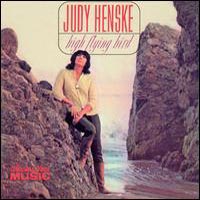 Ihr zweites und letztes Album für Elektra kann man durchaus als einen
Folkrock-Klassiker bzw. eine Folkrock-Pioniertat bezeichnen. Aber eigentlich
trifft es folgendes besser: Judy Henske ist die Kombination aus
Patsy Cline und Billie Holiday, deren "God Bless The
Child" sie ganz wunderbar singt. Weder sah sie wie Folk-Queen Joan
Baez aus, noch klang sie so. Ihr inoffizieller Titel war - glaube
ich - "Queen Of Beatnik".
Ihr zweites und letztes Album für Elektra kann man durchaus als einen
Folkrock-Klassiker bzw. eine Folkrock-Pioniertat bezeichnen. Aber eigentlich
trifft es folgendes besser: Judy Henske ist die Kombination aus
Patsy Cline und Billie Holiday, deren "God Bless The
Child" sie ganz wunderbar singt. Weder sah sie wie Folk-Queen Joan
Baez aus, noch klang sie so. Ihr inoffizieller Titel war - glaube
ich - "Queen Of Beatnik".
Der Titelsong aus der Feder von Billy Ed Wheeler wurde später auch
von Jefferson Airplane aufgenommen.
Es gibt auch ein paar gute eigene Lieder, z. B. "Oh, You Engineer",
das sie zusammen mit dem damaligen Playboy-Cartoonisten und späteren Dr.
Hook-Hitlieferanten Shel Silverstein
schrieb, der auch für die geistreichen Linernotes verantwortlich ist.
Ende der 60er machte sie mit ihrem damaligen Ehemann Jerry Yester
auf Zappas Straight-Label noch eine Kultplatte ("Farewell
Aldebaran"), heiratete in den 70ern den Keyboarder Craig Doerge
und hat gerade, im zarten Alter von 72 Jahren!, eine neue CD herausgebracht.
Tolle Lady!
(03.05.2009)

 Mehr ...
Mehr ...
Henske sings with a full-throated, bluesy style reminiscent of Mama Cass on her best album, which was one of the first contemporary folk records to use a rhythm section (including Earl Palmer on drums). Highlighted by the title track, a moody, soaring ballad that was covered by Jefferson Airplane.
(by Richie Unterberger, All Music Guide)
|
| Jusef Lateef: "Eastern Sounds"
(Prestige, 1964) |
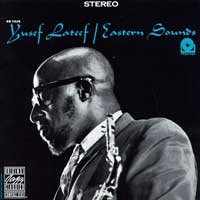 "Eastern Sounds" ist anscheinend genauso wie Coltranes "Black
Pearls" ein Prestige-Veröffentlichung mit gewisser "Verzögerung":
bereits am 5. September 1961 im Quartett mit Barry Harris (piano),
Ernie Farrow (Bass und die/das indische "Rabat") und
Lex Humphries (drums) eingespielt, ist Album wohl erst ca. 1964
herausgekommen, als Lateef bereits bei Impulse unter Vertrag war! Ganz
lässig und ohne großes Brimborium bringt der Multiinstrumentalist Jusef
Lateef (der schon in den 50ern zum Islam kovertierte) tatsächlich einen völlig
ernsthaften Oboenblues!) Ost und West musikalisch zusammen. Und das noch
viel früher als sein Kollege John Coltrane. Klasse Platte.
"Eastern Sounds" ist anscheinend genauso wie Coltranes "Black
Pearls" ein Prestige-Veröffentlichung mit gewisser "Verzögerung":
bereits am 5. September 1961 im Quartett mit Barry Harris (piano),
Ernie Farrow (Bass und die/das indische "Rabat") und
Lex Humphries (drums) eingespielt, ist Album wohl erst ca. 1964
herausgekommen, als Lateef bereits bei Impulse unter Vertrag war! Ganz
lässig und ohne großes Brimborium bringt der Multiinstrumentalist Jusef
Lateef (der schon in den 50ern zum Islam kovertierte) tatsächlich einen völlig
ernsthaften Oboenblues!) Ost und West musikalisch zusammen. Und das noch
viel früher als sein Kollege John Coltrane. Klasse Platte.
(10.05.2009)

 Mehr ...
Mehr ...
One of multi-instrumentalist and composer Yusef Lateef's most enduring recordings, Eastern Sounds was one of the last recordings made by the band that Lateef shared with pianist Barry Harris after the band moved to New York from Detroit, where the jazz scene was already dying. Lateef had long been interested in Eastern music, long before John Coltrane had ever shown any public interest anyway, so this Moodsville session (which meant it was supposed to be a laid-back ballad-like record), recorded in 1961, was drenched in Lateef's current explorations of Eastern mode and interval, as well as tonal and polytonal improvisation. That he could do so within a context that was accessible, and even "pretty," is an accomplishment that stands today. The quartet was rounded out by the inimitable Lex Humphries on drums � whose brushwork was among the most deft and inventive of any player in the music with the possible exception of Connie Kay from the Modern Jazz Quartet � and bass and rabat player Ernie Farrow. The set kicks off with "The Plum Blossom," a sweet oboe and flute piece that comes from an Eastern scale and works in repetitive rhythms and a single D minor mode to move through a blues progression and into something a bit more exotic, which sets up the oboe-driven "Blues for the Orient." Never has Barry Harris' playing stood up with more restraint to such striking effect than it does here. He moves the piece along with striking ostinatos and arpeggios that hold the center of the tune rather than stretch it. Lateef moans softly on the oboe as the rhythm section doubles, then triples, then half times the beat until it all feels like a drone. There are two cinematic themes here � he cut themes from the films Spartacus and The Robe, which are strikingly, hauntingly beautiful � revealing just how important accessibility was to Lateef. And not in the sense of selling out, but more in terms of bringing people to this music he was not only playing, but discovering as well. (Listen to Les Baxter and to the early-'60s recordings of Lateef � which ones are more musically enduring?) However, the themes set up the deep blues and wondrous ballad extrapolations Lateef was working on, like "Don't Blame Me" and "Purple Flower," which add such depth and dimension to the Eastern-flavored music that it is hard to imagine them coming from the same band. Awesome.
(by Thom Jurek, All Music Guide)
|
Jackie McLean: "Destination
Out" (Blue Note, 1964) |
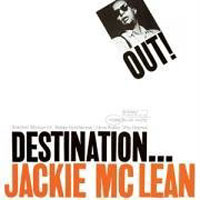 Weil ich letztendlich kein Kenner der Musik von Altsaxophonist Jackie
McLean greife ich nur gelegentlich zu, wenn ich eine seiner Reissue-CDs
in der Grabbelkiste finde. Zwei, dreimal habe ich dabei interessante,
aber mich nicht wirklich begeisternde Aufnahmen entdeckt, aber "Destination
Out" ist ein echter Klassiker: lediglich vier Originalkompositionen,
drei von Posaunist Gracan Moncur III, eine von McLean selber,
jeweils um die 10 Minuten lang, von den beiden Bläsern zusammen mit der
Rhythmusgruppe Roy Haynes (dr) und Larry Ridley (b) und
dem Vibraphonspieler Bobby Hutcherson als "Pianoersatz"
eingespielt bringen genau die richtige Mischung aus Form und Freiheit,
altem und neuem Jazz. Und wie immer natürlich mit einem fantastischen
Sound Dank Rudy van Gelder. Aufgenommen am 20. 09. 1963.
Weil ich letztendlich kein Kenner der Musik von Altsaxophonist Jackie
McLean greife ich nur gelegentlich zu, wenn ich eine seiner Reissue-CDs
in der Grabbelkiste finde. Zwei, dreimal habe ich dabei interessante,
aber mich nicht wirklich begeisternde Aufnahmen entdeckt, aber "Destination
Out" ist ein echter Klassiker: lediglich vier Originalkompositionen,
drei von Posaunist Gracan Moncur III, eine von McLean selber,
jeweils um die 10 Minuten lang, von den beiden Bläsern zusammen mit der
Rhythmusgruppe Roy Haynes (dr) und Larry Ridley (b) und
dem Vibraphonspieler Bobby Hutcherson als "Pianoersatz"
eingespielt bringen genau die richtige Mischung aus Form und Freiheit,
altem und neuem Jazz. Und wie immer natürlich mit einem fantastischen
Sound Dank Rudy van Gelder. Aufgenommen am 20. 09. 1963.
(24.05.2009)

 Mehr ...
Mehr ...
Like Eric Dolphy before him, Jackie McLean sought to create a kind of vanguard "chamber jazz" that still had the blues feel and — occasionally — the groove of hard bop, though with rounded, moodier edges. Destination Out! was the album on which he found it. Still working with Grachan Moncur III and Bobby Hutcherson — his direct spiritual connection to Dolphy — McLean changed his rhythm section by employing drummer Roy Haynes and bassist Larry Ridley. This combination proved a perfect balance of the four elements. The program is four tunes, three of which were written by Moncur. If there was a perfect Blue Note session after John Coltrane's Blue Train, this was it. Opening with a ballad was a novel idea in 1966, but McLean uses Moncur's love and hate to reveal all the tonal possibilities within this group of musicians, and the textural interplay that exists in the heightened sense of form, time breaks, and rhythm changes. As begun on One Step Beyond, the notion of interval is key in this band, and an elemental part of Moncur's composition. The horn lines are spare, haunting, warm, and treated as textural elements by Hutcherson's vibes. On the tune "Esoteric," Hutcherson and Haynes throw complex rhythmic figures into the mix. Moncur's writing is angular, resembling Ornette's early-'60s melodic notions more than Coltrane's modal considerations. Hutcherson's solo amid the complex, knotty melodic frame is just sublime. "Khalil the Prophet" is McLean's only contribution compositionally to the album, but it's a fine one. Using a hard bop lyric and a shape-shifting sense of harmonic interplay between the three front-line players, McLean moves deeply into a blues groove without giving into mere 4/4 time structures. The architecture of his solo is wonderfully obtuse, playing an alternating series of eighths, 12ths, and even 16ths against Hutcherson's wide-open comping and arpeggio runs. The set ends with Moncur's "Riff Raff," a strolling blues that makes full use of counterpoint on the vibes. Moncur sets his solo against McLean's melodic engagement of Hutcherson, forcing both men into opposition positions that get resolved in a sultry, funky, shimmering blues groove. Of all of McLean's Blue Note dates, so many of which are classic jazz recordings, Destination Out! stands as the one that reveals the true soulfulness and complexity of his writing, arranging, and "singing" voice.
(by Thom Jurek, All Music Guide)
|
| Ike Quebec: "It Might A
Well Be Spring" (Blue Note, 1964) |
 Aufgenommen
1961, veröffentlicht aber erst 1964, was nicht ungewöhnlich war für die
Blue-Note-Strategie Mit Milt Hinton (bass), Al Harewood
(dr) und Freddie Roach (org) sind die etwas unbekannteren Mitmusiker.
Das Album hat mir optisch schon immer gut gefallen. Kürzlich habe ich
in der Grabbelkiste von 2001 zugegriffen ... Aufgenommen
1961, veröffentlicht aber erst 1964, was nicht ungewöhnlich war für die
Blue-Note-Strategie Mit Milt Hinton (bass), Al Harewood
(dr) und Freddie Roach (org) sind die etwas unbekannteren Mitmusiker.
Das Album hat mir optisch schon immer gut gefallen. Kürzlich habe ich
in der Grabbelkiste von 2001 zugegriffen ...
(März 2009) |
| Horace Silver Quintet:
"Song For My Father" (Blue Note, 1964) |
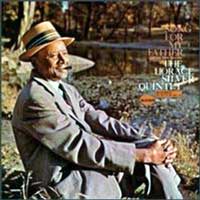

 Mehr ...
Mehr ...
Da der Titeltrack Steely Dan zu dem Song "Rikki, Don't Lose That Number" inspirierte, wurde Song For My Father bekannt als Jazzaufnahme, die tausend schlechte Pop-Platten nach sich zog. Aber ganz gleich welche Absichten Steely Dan und ihre vielen, vielen verzweifelten Imitatoren hatten, wir sollten die Schuld hieran nicht dem Pianisten Horace Silver in die Schuhe schieben: Dies ist eine der gefühlvollsten und erfreulichsten Sammlungen von Blue Note -- und das heißt schon etwas. Horace Silver war ein Pionier des Hard-Bop-Stils, der Gospel und R&B mit Jazz kombinierte, er war der Autor von vielen hervorragenden Kompositionen, zu denen nicht nur "Song For My Father" gehört, sondern auch "Opus De Funk", "Nica's Dream", "Senor Blues" und "The Preacher". Seine Quintette, die Tenorsaxofon und Trompete präsentieren, brachten solche Talente hervor wie die Trompeter Woody Shaw, Art Farmer und Donald Byrd. Auf Song For My Father kommt der Tenorsaxofonist Joe Henderson hinzu, der eine seiner typischen Melodien, "The Kicker", beisteuert. Neben der anspruchsvollen Arbeit mit dem Quintett bietet dieses Album auch ein schönes Porträt des Pianisten mit seinem Trio bei "Lonely Woman".
(Fred Goodman, Amazon)
One of Blue Note's greatest mainstream hard bop dates, Song for My Father is Horace Silver's signature LP and the peak of a discography already studded with classics. Silver was always a master at balancing jumping rhythms with complex harmonies for a unique blend of earthiness and sophistication, and Song for My Father has perhaps the most sophisticated air of all his albums. Part of the reason is the faintly exotic tint that comes from Silver's flowering fascination with rhythms and modes from overseas -- the bossa nova beat of the classic "Song for My Father," for example, or the Eastern-flavored theme of "Calcutta Cutie," or the tropical-sounding rhythms of "Que Pasa?" Subtle touches like these alter Silver's core sound just enough to bring out its hidden class, which is why the album has become such a favorite source of upscale ambience. Song for My Father was actually far less focused in its origins than the typical Silver project; it dates from the period when Silver was disbanding his classic quintet and assembling a new group, and it features performances from both bands (and, on the CD reissue with bonus tracks, three different sessions). Still, it hangs together remarkably well, and Silver's writing is at its tightest and catchiest. The title cut became Silver's best-known composition, partly because it provided the musical basis for jazz-rock group Steely Dan's biggest pop hit "Rikki Don't Lose That Number." Another hard bop standard is introduced here in the lone non-Silver tune, tenor saxophonist Joe Henderson's "The Kicker," covered often for the challenge of its stuttering phrases and intricate rhythms. Yet somehow it comes off as warm and inviting as the rest of the album, which is necessary for all jazz collections -- mainstream hard bop rarely comes as good as Song for My Father.
(by Steve Huey, AMG)
A Blue Note stalwart for many years – he joined the label in 1952 and stayed until 1979 – Horace Silver was a pianist who helped to establish not only the hard bop aesthetic but also the genre’s classic small-group format with its twin horn line-up. Silver and his quintet recorded many fine LPs for Blue Note, but Song For My Father, released in early 1965, is one of his finest for the label, even though it features two different incarnations of the pianist’s band. The “classic” line-up – featuring saxophonist Junior Cook and trumpeter Blue Mitchell – appears on just one cut, while their replacements (Joe Henderson and Carmel Jones, respectively) are present on four others (the closing track, ‘Lonely Woman’, is a trio recording between Silver, bassist Gene Taylor and drummer Roy Brooks). Henderson, in fact, brings an earthy robustness to the proceedings with his solo on the album’s classic title track (whose intro was “borrowed” by rock group Steely Dan for their 1974 song ‘Rikki Don’t Lose That Number’).
(www.udiscovermusic.com)
Although he co-founded The Jazz Messengers with Art Blakey, Silver preferred to forge a solo career and spent 28 years recording as a leader for Blue Note. His most famous album was this one, whose cornerstone was the infectious title song defined by a loping bass line, an elegant horn theme, and Joe Henderson’s vigorous tenor sax solo. The 10-track album also featured elegant ballads (“Lonely Woman” and “Calcutta Cutie”), Latin grooves (“Que Pasa”) and swinging hard bop (“The Kicker”). The album remains an enduring monument to Silver’s genius.
(www.udiscovermusic.com)
|
 Mehr ...
Mehr ...
 So weit ich weiß ist dies einer der größten Hits des Blue Note Labels
aus den 60ern! Aufgenommen am 21. Dez. 1963.
So weit ich weiß ist dies einer der größten Hits des Blue Note Labels
aus den 60ern! Aufgenommen am 21. Dez. 1963.
 Mehr ...
Mehr ...
 Mit
dem dritten Album gab es eine Abkehr von den mehr politischen Songs, zurück
zu privaten Themen. "Chimes Of Freedom", "My Back Pages"
"It Ain't Me, Babe". Hat damals nicht jedem in den Kram gepasst.
Mit
dem dritten Album gab es eine Abkehr von den mehr politischen Songs, zurück
zu privaten Themen. "Chimes Of Freedom", "My Back Pages"
"It Ain't Me, Babe". Hat damals nicht jedem in den Kram gepasst. Im Sommer '64 hatte Coltrane mit McCoy Tyner, Jimmy Garrison
und Elvin Jones endlich "klassischen" Quartett zusammen,
mit dem er dann am 09.12.64 das legendäre Album "A
Love Supreme" aufnehmen würde. Erstmalig gab es auch nur
Eigenkompositionen zu hören. Aus der Distanz heraus betrachtet hat
"Crescent" wohl nicht den gleichen historischen Stellenwert,
ist aber auf jeden Fall ein tolles, von vielen Leuten wohl erst noch zu
entdeckendes Album!
Im Sommer '64 hatte Coltrane mit McCoy Tyner, Jimmy Garrison
und Elvin Jones endlich "klassischen" Quartett zusammen,
mit dem er dann am 09.12.64 das legendäre Album "A
Love Supreme" aufnehmen würde. Erstmalig gab es auch nur
Eigenkompositionen zu hören. Aus der Distanz heraus betrachtet hat
"Crescent" wohl nicht den gleichen historischen Stellenwert,
ist aber auf jeden Fall ein tolles, von vielen Leuten wohl erst noch zu
entdeckendes Album!
 Mehr ...
Mehr ...
 Ein
Highlight der Bossa Nova/Jazz-Fusion. Mit den Tom Jobim-Songs "One
Note Samba" und "Corcovado" und vielen anderen Jazz-Klassikern.
Als Gaststar ist die Sängerin Astrud Gilberto dabei
(Getz und Gilberto hatten es im Jahr zuvor geschafft,
als Jazzer mit dem "Girl from Ipanema" in die Charts zu kommen),
am Vibraphon ein junger Mann zu Beginn seiner Weltkarriere dabei: Gary Burton.
Ein
Highlight der Bossa Nova/Jazz-Fusion. Mit den Tom Jobim-Songs "One
Note Samba" und "Corcovado" und vielen anderen Jazz-Klassikern.
Als Gaststar ist die Sängerin Astrud Gilberto dabei
(Getz und Gilberto hatten es im Jahr zuvor geschafft,
als Jazzer mit dem "Girl from Ipanema" in die Charts zu kommen),
am Vibraphon ein junger Mann zu Beginn seiner Weltkarriere dabei: Gary Burton.
 Lost & Found!
Lost & Found! Mehr ...
Mehr ...
 Aufgenommen
mit dem Red Garland Trio (Garland am Piano, dazu Drummer Art
Taylor und Bassist Paul Chambers), verstärkt durch Trompeter
Donald Byrd, bereits am 23.05.1958. Nach meiner Vermutung
auf Basis der Bestellnummer (PR 7316) aber erst 1964 veröffentlicht, als
Coltrane bereits ein "Star" war. Eine der unzähligen Sessions,
die Coltrane damals für das Prestige-Label machte. Der Vorwurf an Künstler,
bzw. eher: an das Label, lautet natürlich schnell: "Abfallprodukt"
oder sogar: "Trittbrettfahrer". Natürlich ist das hier nicht
so innovativ, was Coltrane zeitgleich auf dem Impulse-Label produzierte
und veröffentlichte Aufnahmen (z.B. "Crescent"
vom Juni '64 oder das im Dezember folgende Meisterwerk "A
Love Supreme"), aber doch von allerhöchster Güte. Ich kenne inzwischen
so einige der Coltrane Prestige-Veröffentlichungen, aber diese hier scheint
mir doch besonders gelungen. Oder besser gesagt: besonders schön zu geniessen.
Aufgenommen
mit dem Red Garland Trio (Garland am Piano, dazu Drummer Art
Taylor und Bassist Paul Chambers), verstärkt durch Trompeter
Donald Byrd, bereits am 23.05.1958. Nach meiner Vermutung
auf Basis der Bestellnummer (PR 7316) aber erst 1964 veröffentlicht, als
Coltrane bereits ein "Star" war. Eine der unzähligen Sessions,
die Coltrane damals für das Prestige-Label machte. Der Vorwurf an Künstler,
bzw. eher: an das Label, lautet natürlich schnell: "Abfallprodukt"
oder sogar: "Trittbrettfahrer". Natürlich ist das hier nicht
so innovativ, was Coltrane zeitgleich auf dem Impulse-Label produzierte
und veröffentlichte Aufnahmen (z.B. "Crescent"
vom Juni '64 oder das im Dezember folgende Meisterwerk "A
Love Supreme"), aber doch von allerhöchster Güte. Ich kenne inzwischen
so einige der Coltrane Prestige-Veröffentlichungen, aber diese hier scheint
mir doch besonders gelungen. Oder besser gesagt: besonders schön zu geniessen. "Idle Moments", so was wie "Momente des Müßiggangs",
deutet natürlich auf eine sehr lässige Spielart des Jazz hin,
die hier der Gitarrist Grant Green mit seinen exzellenten Mitspielern
(u. a. Joe Henderson am Tenorsax und Bobby Hutcherson am
Vibraphon) pflegt. Vor allem aber swingt die Platte ungemein. Mit böser
Zunge könnte man das als "Barjazz" bezeichnen, aber warum
ist da ein Schimpfwort? Diese Band spielt hier gleichzeitig völlig
lässig und total virtuos - und ich hätte sie dabei extrem gerne
in einem Jazzclub erlebt! Ansonsten: vielleicht DIE PERFEKTE BLUE NOTE
PLATTE?
"Idle Moments", so was wie "Momente des Müßiggangs",
deutet natürlich auf eine sehr lässige Spielart des Jazz hin,
die hier der Gitarrist Grant Green mit seinen exzellenten Mitspielern
(u. a. Joe Henderson am Tenorsax und Bobby Hutcherson am
Vibraphon) pflegt. Vor allem aber swingt die Platte ungemein. Mit böser
Zunge könnte man das als "Barjazz" bezeichnen, aber warum
ist da ein Schimpfwort? Diese Band spielt hier gleichzeitig völlig
lässig und total virtuos - und ich hätte sie dabei extrem gerne
in einem Jazzclub erlebt! Ansonsten: vielleicht DIE PERFEKTE BLUE NOTE
PLATTE?  Mehr ...
Mehr ...
 Ihr zweites und letztes Album für Elektra kann man durchaus als einen
Folkrock-Klassiker bzw. eine Folkrock-Pioniertat bezeichnen. Aber eigentlich
trifft es folgendes besser: Judy Henske ist die Kombination aus
Patsy Cline und Billie Holiday, deren "God Bless The
Child" sie ganz wunderbar singt. Weder sah sie wie Folk-Queen Joan
Baez aus, noch klang sie so. Ihr inoffizieller Titel war - glaube
ich - "Queen Of Beatnik".
Ihr zweites und letztes Album für Elektra kann man durchaus als einen
Folkrock-Klassiker bzw. eine Folkrock-Pioniertat bezeichnen. Aber eigentlich
trifft es folgendes besser: Judy Henske ist die Kombination aus
Patsy Cline und Billie Holiday, deren "God Bless The
Child" sie ganz wunderbar singt. Weder sah sie wie Folk-Queen Joan
Baez aus, noch klang sie so. Ihr inoffizieller Titel war - glaube
ich - "Queen Of Beatnik".  Mehr ...
Mehr ...
 "Eastern Sounds" ist anscheinend genauso wie Coltranes "Black
Pearls" ein Prestige-Veröffentlichung mit gewisser "Verzögerung":
bereits am 5. September 1961 im Quartett mit Barry Harris (piano),
Ernie Farrow (Bass und die/das indische "Rabat") und
Lex Humphries (drums) eingespielt, ist Album wohl erst ca. 1964
herausgekommen, als Lateef bereits bei Impulse unter Vertrag war! Ganz
lässig und ohne großes Brimborium bringt der Multiinstrumentalist Jusef
Lateef (der schon in den 50ern zum Islam kovertierte) tatsächlich einen völlig
ernsthaften Oboenblues!) Ost und West musikalisch zusammen. Und das noch
viel früher als sein Kollege John Coltrane. Klasse Platte.
"Eastern Sounds" ist anscheinend genauso wie Coltranes "Black
Pearls" ein Prestige-Veröffentlichung mit gewisser "Verzögerung":
bereits am 5. September 1961 im Quartett mit Barry Harris (piano),
Ernie Farrow (Bass und die/das indische "Rabat") und
Lex Humphries (drums) eingespielt, ist Album wohl erst ca. 1964
herausgekommen, als Lateef bereits bei Impulse unter Vertrag war! Ganz
lässig und ohne großes Brimborium bringt der Multiinstrumentalist Jusef
Lateef (der schon in den 50ern zum Islam kovertierte) tatsächlich einen völlig
ernsthaften Oboenblues!) Ost und West musikalisch zusammen. Und das noch
viel früher als sein Kollege John Coltrane. Klasse Platte.  Mehr ...
Mehr ...
 Weil ich letztendlich kein Kenner der Musik von Altsaxophonist Jackie
McLean greife ich nur gelegentlich zu, wenn ich eine seiner Reissue-CDs
in der Grabbelkiste finde. Zwei, dreimal habe ich dabei interessante,
aber mich nicht wirklich begeisternde Aufnahmen entdeckt, aber "Destination
Out" ist ein echter Klassiker: lediglich vier Originalkompositionen,
drei von Posaunist Gracan Moncur III, eine von McLean selber,
jeweils um die 10 Minuten lang, von den beiden Bläsern zusammen mit der
Rhythmusgruppe Roy Haynes (dr) und Larry Ridley (b) und
dem Vibraphonspieler Bobby Hutcherson als "Pianoersatz"
eingespielt bringen genau die richtige Mischung aus Form und Freiheit,
altem und neuem Jazz. Und wie immer natürlich mit einem fantastischen
Sound Dank Rudy van Gelder. Aufgenommen am 20. 09. 1963.
Weil ich letztendlich kein Kenner der Musik von Altsaxophonist Jackie
McLean greife ich nur gelegentlich zu, wenn ich eine seiner Reissue-CDs
in der Grabbelkiste finde. Zwei, dreimal habe ich dabei interessante,
aber mich nicht wirklich begeisternde Aufnahmen entdeckt, aber "Destination
Out" ist ein echter Klassiker: lediglich vier Originalkompositionen,
drei von Posaunist Gracan Moncur III, eine von McLean selber,
jeweils um die 10 Minuten lang, von den beiden Bläsern zusammen mit der
Rhythmusgruppe Roy Haynes (dr) und Larry Ridley (b) und
dem Vibraphonspieler Bobby Hutcherson als "Pianoersatz"
eingespielt bringen genau die richtige Mischung aus Form und Freiheit,
altem und neuem Jazz. Und wie immer natürlich mit einem fantastischen
Sound Dank Rudy van Gelder. Aufgenommen am 20. 09. 1963. Mehr ...
Mehr ...
 Aufgenommen
1961, veröffentlicht aber erst 1964, was nicht ungewöhnlich war für die
Blue-Note-Strategie Mit Milt Hinton (bass), Al Harewood
(dr) und Freddie Roach (org) sind die etwas unbekannteren Mitmusiker.
Das Album hat mir optisch schon immer gut gefallen. Kürzlich habe ich
in der Grabbelkiste von 2001 zugegriffen ...
Aufgenommen
1961, veröffentlicht aber erst 1964, was nicht ungewöhnlich war für die
Blue-Note-Strategie Mit Milt Hinton (bass), Al Harewood
(dr) und Freddie Roach (org) sind die etwas unbekannteren Mitmusiker.
Das Album hat mir optisch schon immer gut gefallen. Kürzlich habe ich
in der Grabbelkiste von 2001 zugegriffen ...
 Mehr ...
Mehr ...
 Noch so eine Wühltischentdeckung! Ende der 60er hatte er die
Noch so eine Wühltischentdeckung! Ende der 60er hatte er die 
 "The
Times They Are A-Changin' ist eine der düstersten Platten, die
Dylan gemacht hat. Als 22-jähriger klingt er schon genauso pessimistisch
wie der kränkelnde 55-jährige, der "
"The
Times They Are A-Changin' ist eine der düstersten Platten, die
Dylan gemacht hat. Als 22-jähriger klingt er schon genauso pessimistisch
wie der kränkelnde 55-jährige, der "